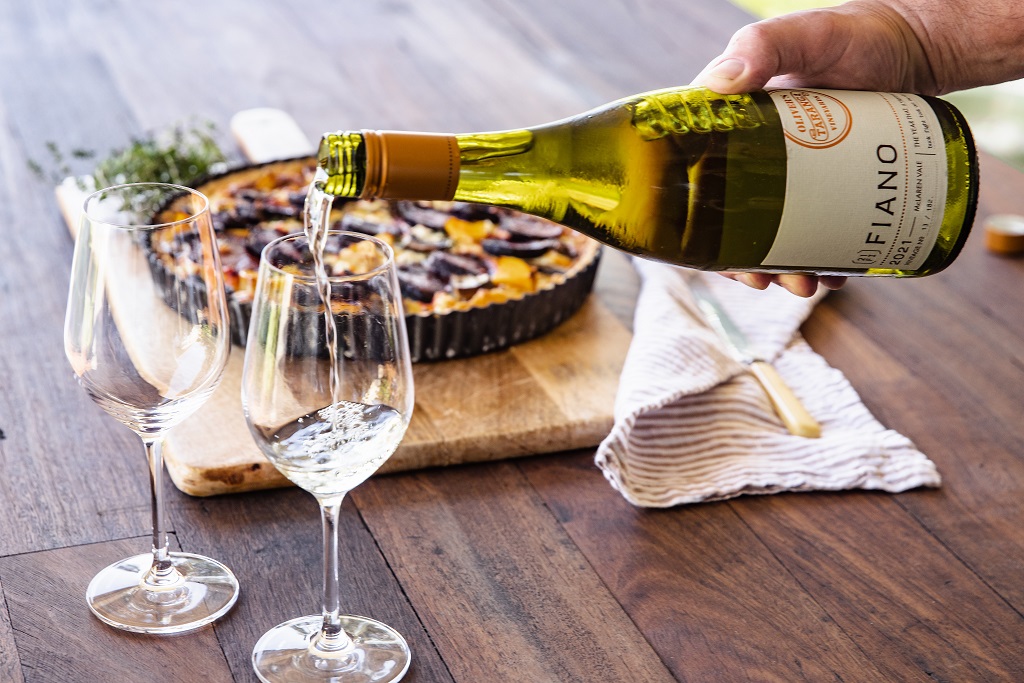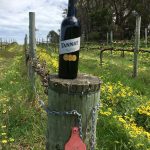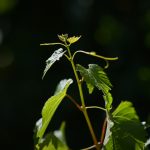Image Oliver’s Taranga
Fiano has taken on the alternative varieties zeitgeist more than most other varieties. So much that many don’t even consider it alternative anymore. It embodies everything the modern consumer looks for: a light, aromatic flavour profile and growing conditions that are sustainable in a warming environment. Harrison Davies reports.
Conversations about winegrape sustainability in rising temperatures are becoming more prevalent each year – chiefly among winemakers who want to grow grapes using lower intervention techniques and less water.
Fiano was one of the first champions of the alternative variety movement and has been adopted by wine producers in warmer regions like McLaren Vale, the Barossa Valley as well as inland regions like the Riverina.
Fiano has its historical roots buried in the ancient empires of Europe. Records suggest the grape was cultivated within the Roman Empire where historians theorise it could have been involved in the making of Apianum.
The grape has since been grown primarily in the southern Italian region on Campania, where it is still sometimes referred to by its ancient Roman name.
The variety saw a sharp decline in Europe in the 19th century, when a Phylloxera outbreak wiped out much of the historically planted vineyards.
When those vineyards were replanted, growers turned away from Fiano, as it had traditionally had lower yields, and planted higher yield varieties like Sangiovese and Montepulciano as well as French varieties like Chardonnay.
Fiano was almost banished to the pages of wine history textbooks were it not for Italian winemaker Antonio Mastroberardino, who revived Fiano alongside several other dormant varieties with a line of celebrated single vineyard examples.
Following Mastroberardino’s work, the DOC for Fiano di Avellino was granted in 1978 (becoming a DOCG in 2003), creating a foundation upon which the grape could build on its fortunes.
Fiano was first brought to Australia in 1978 by the CSIRO, where it was only ever used for research.
The first commercial plantings of Fiano wouldn’t come until the early 2000’s when McLaren Vale based Coriole and the ever-prolific alternative variety pioneers Chalmers would plant vines and begin making varietal wines from them. Coriole using material gathered from the CSIRO whilst Chalmers imported their own vines.
Fiano has since captured the attention of the whole industry and is among the most notable Italian varieties breaking into the mainstream.
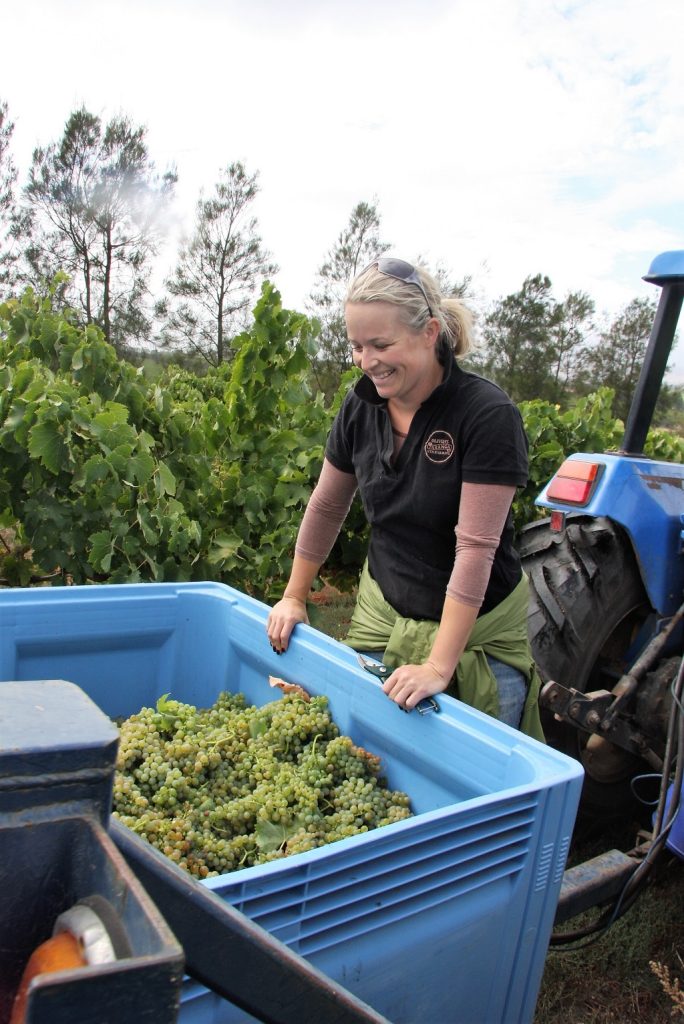
Planting Roman roots
In a 2017 Wine & Viticulture Journal article, La Prova winemaker Sam Scott described the variety as the future of the industry.
“It reflects the evolving culture of how we use wine; more is consumed at the table, it is a foodie wine, and it has the adaptability to thrive in our changing climate with crazy variable vintages and extreme weather events. It also suits our soils and complements our lifestyle,” he wrote.
As the years have passed by since the story was written, this has only become truer, and more winemakers have adopted the Southern Italian variety due to its hardiness and ability to thrive in tough conditions.
Fiano is a warm climate white and thrives in dry conditions. It is grown in volcanic soils in the southern part of the Mediterranean – conditions similar to many Australian regions.
Fiano berries are small and thick skinned, providing a solid resistance to diseases like botrytis. They also retain a lot of acid in warm conditions.
In Italy, It is grown on new, volcanic soils, but it has also shown its ability to success in sandy and mineral rich soils in regions across Australia.
Following Coriole in the mid 2000’s McLaren Vale growers and winemakers Oliver’s Taranga started working with the variety.
Winemaker and director Corrina Wright said they liked the variety because of how it retained its acidity in the warm, coastal climate of the region.
“The reason that we put it in in the first place was because it can hold on to its natural acidity really strongly,” she said.
“It has a very high natural acidity which means we can ripen it and not have to add acid in the balance, the natural balances are a lot better.
“It’s also got very sick skins, which mean it’s got a lot of disease tolerance and resistance.
“I suppose it’s a little bit wind in-tolerant, its tendrils don’t start to hang on until there’s quite a lot of growth in the vines and it has quite a lot of vegetative growth and it can have a bit of a poor set.
“We decided to say ‘let’s just have a crack’ when we first planted it and [we have] been really happy with what it created – great big wines with such great texture.”
Fiano is a white grape that ripens relatively late to other white varieties. The Chalmers clone, VCR 3, has been characterised as having lower vigour and smaller berries than the CSIRO clone.
In a report release by Chalmers, they described the grape as a climate change friendly variety, which could do well in a slew of different conditions.
“[Fiano] has been planted in a wide array of different soil types and climates. The quality produced in all conditions and all styles of viticulture is remarkable. It’s seems it is a very adaptable variety which is a true grape growers dream,” Chalmers wrote.
“With its thick skins and upright growth habit creating air flow in the open canopy it’s not very susceptible to the usual vineyard fungal disorders or rot.
“Its natural high acidity means it stays fresh even in the warmest of seasons up to a good level of sugar ripeness. If anything, in cooler regions/seasons the high acid could be a hindrance.
“But as a ‘climate change’ variety for Australian viticulture in a drier, warmer world with potentially humid events during harvest, Fiano gets a massive seal of approval from Chalmers, and everyone else who grows it.”
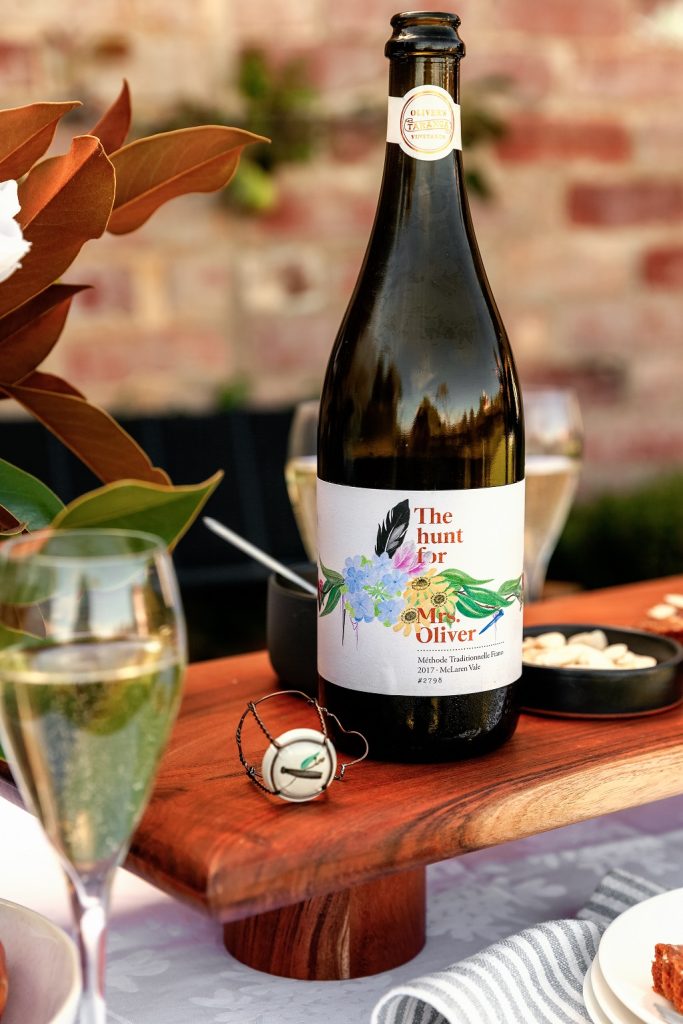
Working with a new white
Fiano wine is often lighter in colour and has intense aromas of pear and honey in its younger years but can also produce age-worthy examples.
Part of its journey toward notoriety is partly due to advances in technology, which allow winemakers to limit oxidation and preserve is fresh notes.
In previous eras winemakers would rest the wine on oak for a short time, but more modern producers are aging their Fiano in Cement eggs and in steel to emphasise its aromatic flavours.
Wright said they try to keep their hands off the wine as much as possible in order to preserve the wine’s natural notes.
“[Our process is] really hands off. The wine basically goes straight into the press and sometimes there’s a little bit of time in the press on skins and then with no additives we press out,” she explained.
“One hundred per cent pressing go back in and stay on lees and just as a natural ferment and then slowly settles out.”
Oliver’s Taranga also make a sparkling out of the Fiano using the traditional method.
“We also make a sparkling Fiano; a traditional method sparkling, [picked] a bit earlier and quite a clean, neutral-ish, I suppose base wine. The advantage of this as a high natural acidity,” she continued.
Chalmers wrote in their report that it could be used in a variety of ways, and that it suited several kinds of winemaking styles.
“The wines it is making in the various styles, ranging from crunchy and young to oaked and aged, are generally of a great standard no matter the price,” Chalmers wrote.
“Its wine has pale golden colour with green highlights, aromas of fresh florals, persistent and prolonged fruit sensation, good structure and intensity of flavour, and sustained acidity and persistent flavour and aftertaste.
“With such favourable attributes this clone lends itself to varietal winemaking but used in a blend it adds structure and texture. Fiano is also well adapted for oak ageing.”
Fiano looks to continue to see growth in the Australian wine industry. Entries at the alternative varieties wine show are already in the high dozens and writers such as Tony Love are suggesting it’s an alternative no more.
“The result of all this interest, of course, is that now the variety is in huge demand, especially in Mclaren Vale,” Love write.
“It’s hardly emerging any longer. For many, it’s the Italian variety that has become the new Australian white wine of choice.”
All of this was put best by Wright in her closing remarks.
“Good luck trying to find some grapes for it. You’ve seen such huge demand,” she said.
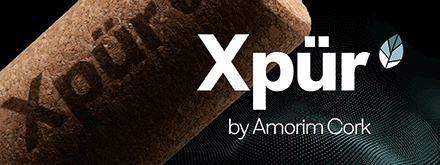
To view the current issue of the Grapegrower & Winemaker, visit our Current Issue page.
